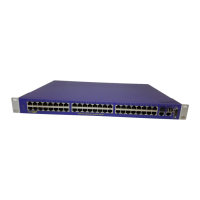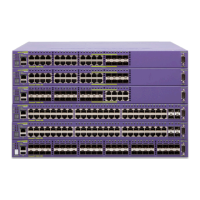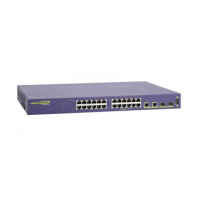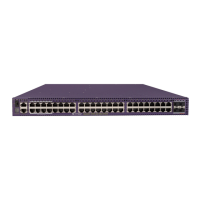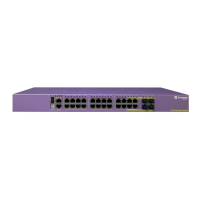Configuring RF Properties
Summit 300-48 Switch Software User Guide 79
Configuring RF Properties
RF profiles allow you to group RF parameters for access using a single CLI command. The following
rules apply for RF profiles:
• After you have defined a profile, subsequent changes automatically apply to all ports assigned to
that profile.
• Each RF profile applies to a specific interface (A or G), so changing a profile only affects the
specified interface.
• Each Summit 300-48 switch ships with default profiles for each supported wireless port.
show wireless ports <portlist> interface [1 | 2]
configuration [detail]
Summarizes wireless configuration information for
the selected port and interface. The optional
keyword, detail, provides more in-depth
information.
show wireless ports <portlist> interface [1 | 2] stats Lists 802.11 interface statistics for the selected port
and interface.
show wireless ports <portlist> interface [1 | 2] status Gives the current state of the selected port and
interface.
Table 22: RF Configuration Commands
Command Description
create rf-profile <name> copy <name> Creates a new profile identified by the string name. The copy
argument specifies the name of an existing profile from which to
obtain the initial values.
create rf-profile <name> mode [A | B | B_G | G] Creates a new profile identified by the string name. The mode
argument specifies the 802.11 interface mode:
• A: 802.11A
• B: 802.11B
• G: 802.11G
• B_G: 802.11B or 802.11G.
delete rf-profile <name> Deletes the named RF profile. The named profile cannot be
attached to any active ports.
config rf-profile <name> <property> <value> Sets the value of the property in the named profile to the
specified value. Changes take effect immediately and are
propagated to all ports that share this profile. All failures are
written to the syslog. See Table 23 for <property> values.
Table 21: Wireless Show Commands (continued)
Command Description

